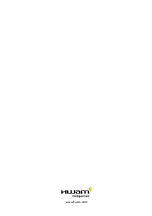
Page 13 of 20 pages
The chimney draft is created by the differences in temperature inside and outside the chimney. The higher the
temperature within the chimney, the greater the draft. It is therefore crucial that the chimney is heated well
through before regulating the air supply and thus limiting the combustion in the stove (a brick chimney takes
longer to warm up than a steel chimney). On days where the weather and wind conditions create insufficient
draught inside the chimney, it is even more important to warm up the chimney as quickly as possible. The
trick is to quickly get some flames going. Split the wood into extra fine pieces, use an extra firelighter, etc.
If the stove has not been used for a longer period, it is important to check that the chimney pipe is not blocked.
It is possible to connect several devices to the same chimney. However, it is important to first check the
applicable rules.
Chimney sweeping
To prevent the risk of chimney fires, the chimney must be cleaned every year. The flue duct and the smoke
chamber above the baffle plate must be cleaned together with the chimney. If the chimney is too tall to
be cleaned from above, it must be equipped with a soot door.
In case of a chimney fire, close all dampers and call the firefighters. Before any further use, have the
chimney checked by the chimney sweeper.
F
IrIng
manual
-
wood
Your first heating session
The lacquer will be fully hardened after the stove has been used, and the door and the ashpan should be
opened very carefully as there will otherwise be a risk that the gaskets will stick to the lacquer. In addi-
tion the lacquer may initially give off an unpleasant odour, so make sure that the room is well ventilated.
Tips about fuel
Approved fuel types
The wood burning stove is EN approved for combustion of wood only. It is recommended to use dried
chopped wood with a water content of 12-18%. Stoking a fire with wet wood results in soot, environmental
problems, and a less efficient fuel economy. It is recommended to purchase a hygrometer to continuously
check that the firewood has the correct moisture content before using it for firing.
Recommended wood types
All types of wood, for instance birch, beech, oak, elm, ash, conifers, and fruit trees can be used as fuel in your
insert. The great difference is not in the fuel value, but in the weight of the wood types per cubic metre.
Beech weighs more per m
3
of wood than common spruce, for instance. This is why more common spruce
is required, in terms of volume, to obtain an amount of heat similar to that of beech. Heavy types of wood
such as ash, beech, oak and elm are generally not that easy to light up. In addition, they burn more slowly and
give off more embers. Light types of wood such as birch, maple, spruce and pine are more easy to light up.
They burn faster and give off fewer ambers. You may therefore take advantage of the light types of wood for
lighting and use the heavier types of wood to ensure a longer burning time.
Banned fuel types
It is not allowed to stoke a fire with the following: printed matter, plywood, plastic, rubber, fluid fuels,
and rubbish such as milk cartons, lacquered wood or impregnated wood and fossil fuels. The reason that
you should not apply any of the above is that during combustion they develop substances that are health
hazardous and harmful to the environment. These substances could also damage your wood burning stove
and chimney, rendering the product warranty void.
Summary of Contents for 4110
Page 1: ...User s Manual EN AUTOPILOT 15 09 2020 97 9706 www hwam com 4110 4120 4150 4140 4130 4160 4240 ...
Page 2: ......
Page 5: ...Page 5 of 20 pages E1 ...
Page 6: ...Page 6 of 20 pages E2 ...
Page 7: ...Page 7 of 20 pages E3 ...
Page 9: ...Page 9 of 20 pages H ...
Page 20: ...www hwam com ...






































